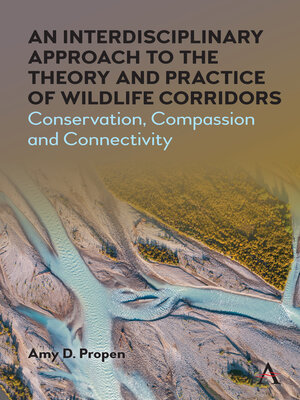An Interdisciplinary Approach to the Theory and Practice of Wildlife Corridors
ebook ∣ Conservation, Compassion and Connectivity · Strategies for Sustainable Development Series
By Amy D. Propen

Sign up to save your library
With an OverDrive account, you can save your favorite libraries for at-a-glance information about availability. Find out more about OverDrive accounts.
Find this title in Libby, the library reading app by OverDrive.



Search for a digital library with this title
Title found at these libraries:
| Library Name | Distance |
|---|---|
| Loading... |
An Interdisciplinary Approach to the Theory and Practice of Wildlife Corridors charts some best practices and makes some new theoretical contributions related to the design and creation of wildlife corridors in Anthropocene times. While the book will provide much of the knowledge necessary for a general and credible understanding of connectivity projects, it will also make a unique theoretical contribution to current knowledge about wildlife corridors by arguing that theories about compassion, empathy, and traditional ecological knowledge should inform wildlife corridor projects.







